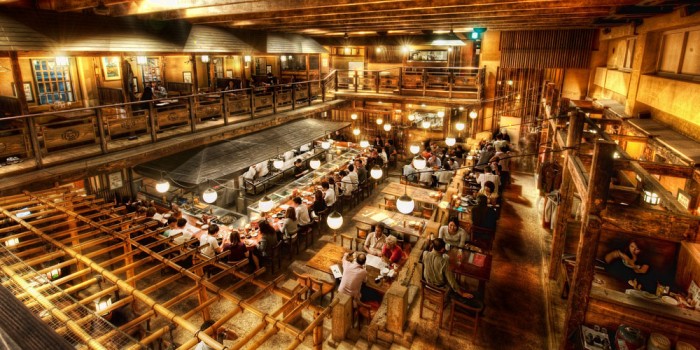Learning from Bus Buddhists
In psychological terms, context is almost everything. Much as we like to think that we know how we will act and react in a given situation, without the richness of...
Tips in Restaurants: Setting a Good Example

Approaches to paying tips vary a lot from one culture to another. Here in the UK a number of factors influence whether a tip is paid that have nothing to do with the service you receive. For example, if payment is collected when the food is ordered, the notion of paying a service tip is essentially by-passed.
On other occasions, the inability to process a tip when payment is made by a card can lead to a situation where you don’t have the cash to tip with and the hassle of getting change can nudge people towards leaving and, somewhat justifiably, blaming the payment systems.
Some restaurants, an increasing number it seems, have taken to including a tip (or ‘service charge’) on the bill. In psychological terms, applying a default option is a powerful way of influencing behaviour – most people will go with it because it’s easy – but I have to say, it irritates the heck out of me.
The main reason for this is that it puts the customer into a potentially uncomfortable position if they wish to break the default: the requirement is to justify the action of not tipping (even if only to oneself), rather than justify the amount tipped.
Recently a large family group gathered in London to see the (incredibly good) musical Matilda. Before hand our group of fifteen met for lunch. We were the first ones in the restaurant, but our table wasn’t ready until 30 minutes after we’d booked it (!), the food was ordinary at best and the service painfully slow (it took us over two hours to have two courses). By the end of the experience I was, frankly, fed up and suggested that we did not tip the establishment.
I removed the ‘service charge’ from the bill and took the time to explain to the waiter that, whilst our lousy experience was not down to him, the overall experience had been sufficiently lousy for me not to want to reward it. That he decided to dispute the time of our original booking, didn’t endear me to either him or the establishment: even if he was right (which he wasn’t – we had the email) what exactly did he hope to achieve by disputing it with me at that point?
Assuming that a restaurant does a reasonable job of delivering an experience customers do value, what’s the best way of nudging them into leaving a tip to help boost the income of the staff that, typically, don’t have a high basic wage?
Quite a lot of research has been done on waiting staff can do: for example, repeating the order back, returning with an extra mint and kneeling down to table height to take the order have all been shown to lead to higher tips.
When it comes to what’s printed on the bill two alternative approaches have produced different results: whilst printing an example tip (‘a 15% tip would be $4.20’) did increase the overall level of tips paid.
However, suggesting different levels of tip to reflect service don’t have the same impact: as has been demonstrated in market research product assessments, the act of rationalising product qualities can change how people evaluate something. The critical thinking engendered by such questions unconsciously influences people to arrive at a different conclusion from when a more impulsive response is invited.
I like the ‘tip example’ approach: it’s less pushy; it appears to achieve a positive result for waiting staff (although as with any psychological study different contexts may lead to different outcomes) and it helps overcome the innumeracy of some!
Source: Seiter, J. S., Brownlee, G. M. and Sanders, M. (2011), Persuasion by Way of Example: Does Including Gratuity Guidelines on Customers’ Checks Affect Restaurant Tipping Behavior?. Journal of Applied Social Psychology, 41: 150–159. doi: 10.1111/j.1559-1816.2010.00706.x
Image courtesy: Trey Ratcliff